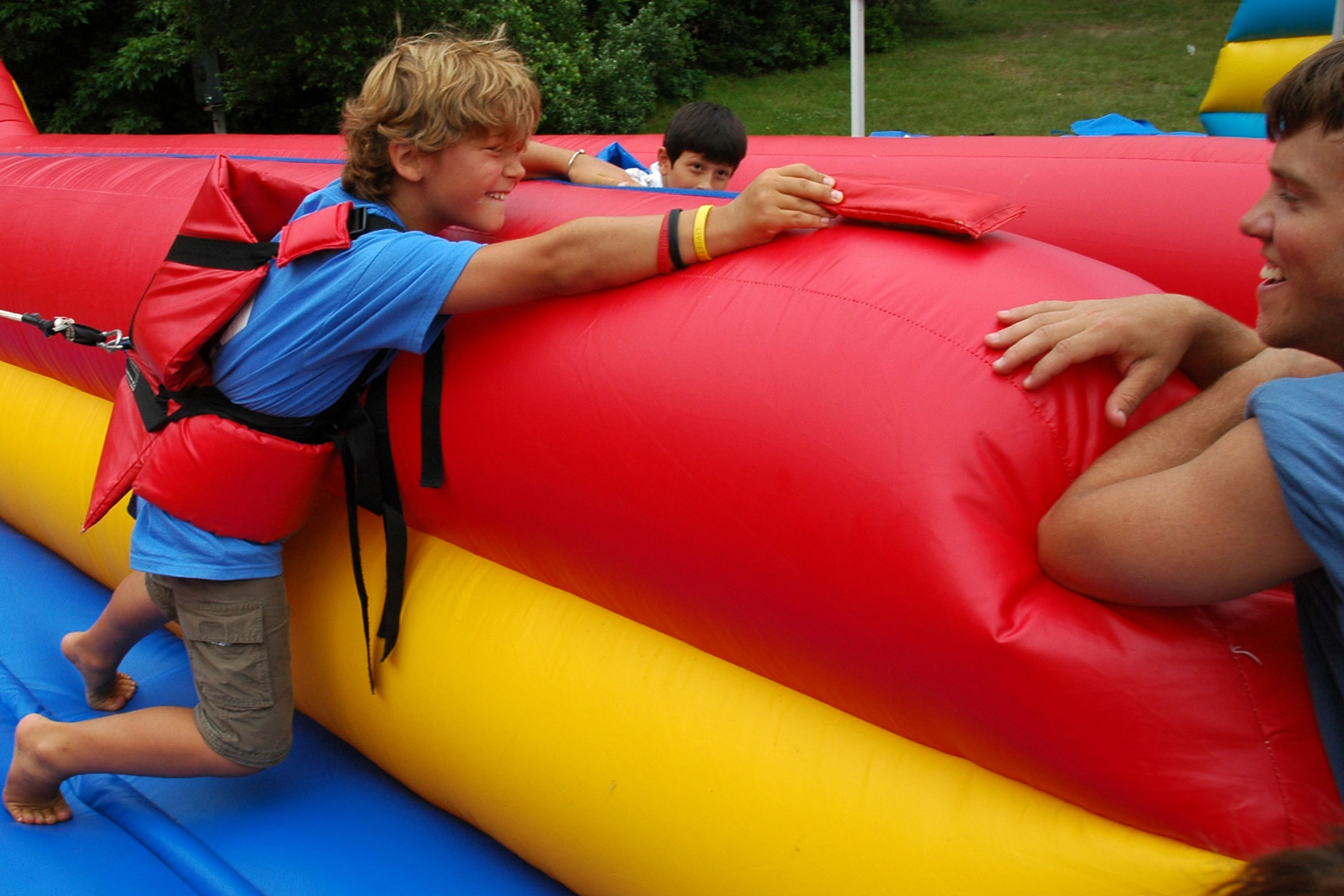 We won’t try and tell you that we haven’t seen the horrific stories in the news regarding inflatable incidents. Are inflatables dangerous? With anything else in the world, yes if improperly maintained, set up or monitored. Regardless of who you are getting your inflatables from, the following safety measures should always be addressed and followed.
We won’t try and tell you that we haven’t seen the horrific stories in the news regarding inflatable incidents. Are inflatables dangerous? With anything else in the world, yes if improperly maintained, set up or monitored. Regardless of who you are getting your inflatables from, the following safety measures should always be addressed and followed.
Staffing. When renting an inflatable, you should make sure the rental company either provides a staff member to monitor the inflatable or they should fully train whoever will be running the inflatable on all safety precautions. If you choose to supply a monitor yourself, your monitor needs to monitor the inflatable and not be roaming the event checking in on the inflatable from time to time.
You should request the inflatable manual; the manuals go over specifics for every inflatable – maximum number of participants, dimensions, restrictions, etc. Most inflatables are limited to four participants or riders at one time. These participants should also be of the same height and body size to avoid any accidents. If a parent wants to bring their child to the top of a slide, the operator should allow only those two to ride to avoid a hazard. These rules are written there for a reason; have your monitor understand and follow those rules.
Staking. Consider this your seat belt. How many people don’t use their seat belt nowadays? It is an added precaution in the event of a car accident. Your stakes are your added precaution in the event of wind and rider movement.
The inflatables that rental companies use are manufactured differently than those you would find in a toy store. Typically, inflatables sold in toy stores are meant for indoor use only. These usually come with nine-twelve inch plastic stakes even though they are for indoor use only. Inflatables for commercial use should be made of a thicker material and require heavier duty stakes and tethers.
Whoever you are renting your inflatable from should use 36-42 inch metal stakes. These need to be hammered into the ground so only six-seven inches are above ground (always call DigSafe to check for water lines, power lines, etc. before staking). From there, tether the inflatables. You should have the manufacturer’s recommended number of stakes per inflatable. For example, a minimum of four stakes for a youth bounce house is typical.
 Your tethers need to be taught; this ensures the inflatable won’t rock side to side with movement from the riders. We recommend having whoever you’re getting the inflatable from set it up and stake it for you; this way, it will be staked and tethered by those who are familiar with the inflatable.
Your tethers need to be taught; this ensures the inflatable won’t rock side to side with movement from the riders. We recommend having whoever you’re getting the inflatable from set it up and stake it for you; this way, it will be staked and tethered by those who are familiar with the inflatable.
Weather. It is safest to use an inflatable with winds under 25 MPH. If the wind exceeds 25 MPH, evacuate the inflatable and turn off the blowers. There are plenty of Apps you can get on your phone that tell you the wind speed in your area or actually take a wind speed measurement where you’re standing. In inclement weather, you should get all riders off the inflatable and deflate. You may get some heat from your guests, but better safe than sorry.
We hope that you don’t let the media blow up of the improper use of inflatables worry you or your guests. Don’t hesitate to ask your inflatable provider questions – what size stakes do you use, will your staff set this up, will your staff remain on site, etc.?
Compass Rose’s Event Managers are trained on all of the above and are privy to the videos that have been going around on the news. No one wants to be responsible for an improperly staked inflatable that lifted off of the ground. Please keep in mind that our Managers are trained and understand the safety precautions necessary to keep you and your guests safe.
If you have any questions at all, reach out to your Project Manager.
